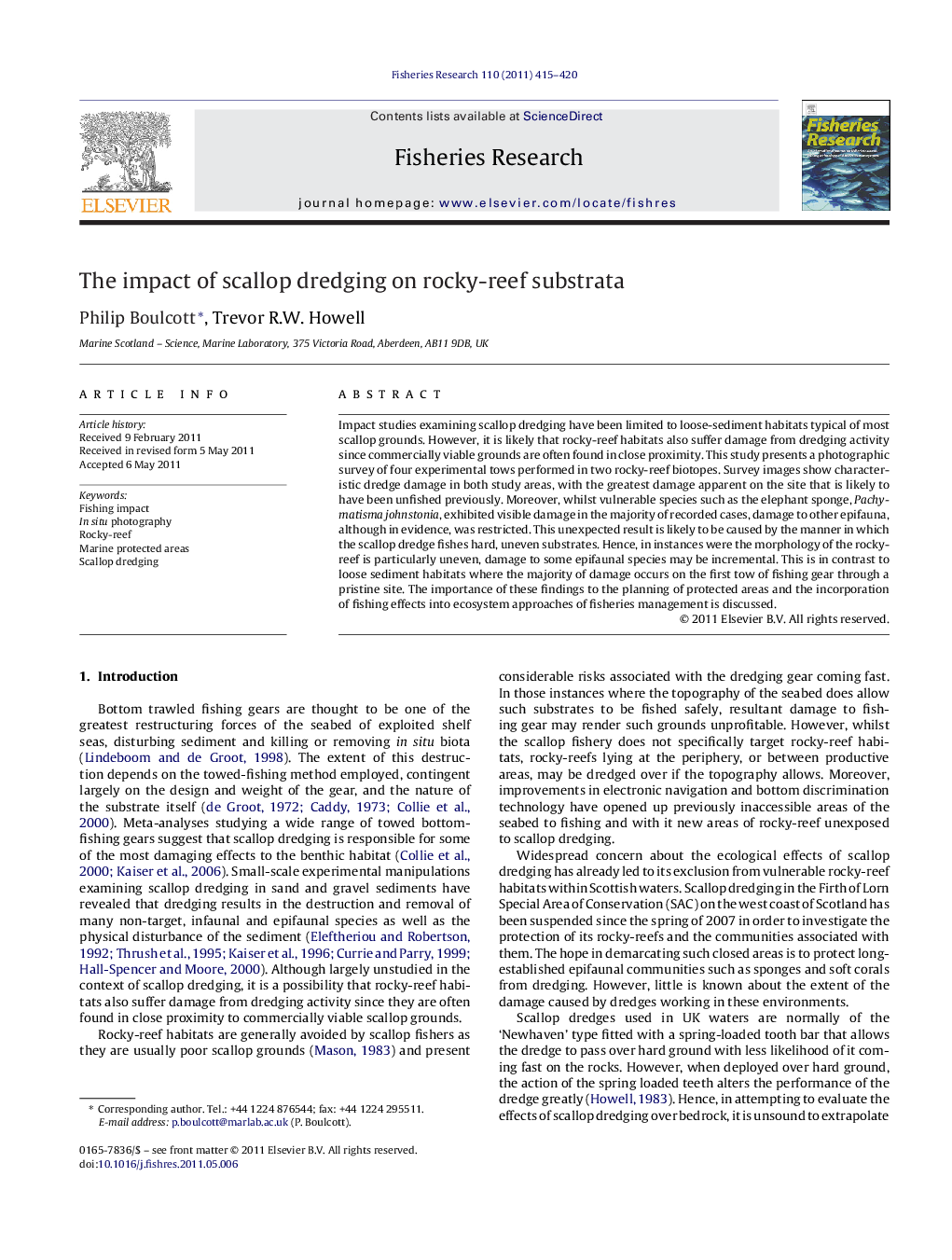| Article ID | Journal | Published Year | Pages | File Type |
|---|---|---|---|---|
| 4543568 | Fisheries Research | 2011 | 6 Pages |
Impact studies examining scallop dredging have been limited to loose-sediment habitats typical of most scallop grounds. However, it is likely that rocky-reef habitats also suffer damage from dredging activity since commercially viable grounds are often found in close proximity. This study presents a photographic survey of four experimental tows performed in two rocky-reef biotopes. Survey images show characteristic dredge damage in both study areas, with the greatest damage apparent on the site that is likely to have been unfished previously. Moreover, whilst vulnerable species such as the elephant sponge, Pachymatisma johnstonia, exhibited visible damage in the majority of recorded cases, damage to other epifauna, although in evidence, was restricted. This unexpected result is likely to be caused by the manner in which the scallop dredge fishes hard, uneven substrates. Hence, in instances were the morphology of the rocky-reef is particularly uneven, damage to some epifaunal species may be incremental. This is in contrast to loose sediment habitats where the majority of damage occurs on the first tow of fishing gear through a pristine site. The importance of these findings to the planning of protected areas and the incorporation of fishing effects into ecosystem approaches of fisheries management is discussed.
Graphical abstractA quadrat image from the towed path across a rocky-reef in the Sound of Jura showing: (a) damage to the elephant hide sponge, Pachymatisma johnstonia, and (b) stones moved by the dredge and colonised by Alcyonium digitatum. Scale bar approx. 10 cm.Figure optionsDownload full-size imageDownload as PowerPoint slideHighlights► Our study recorded damage caused by scallop dredging on rocky-reef habitats. ► Damage varied with the type of epifauna and the underlying topography. ► Due to the hard substrate, damage was generally incremental in nature. ► Wholesale destruction of habitat during the first pass of the dredge was not seen. ► The study highlights the need to protect rocky-reefs assemblages.
